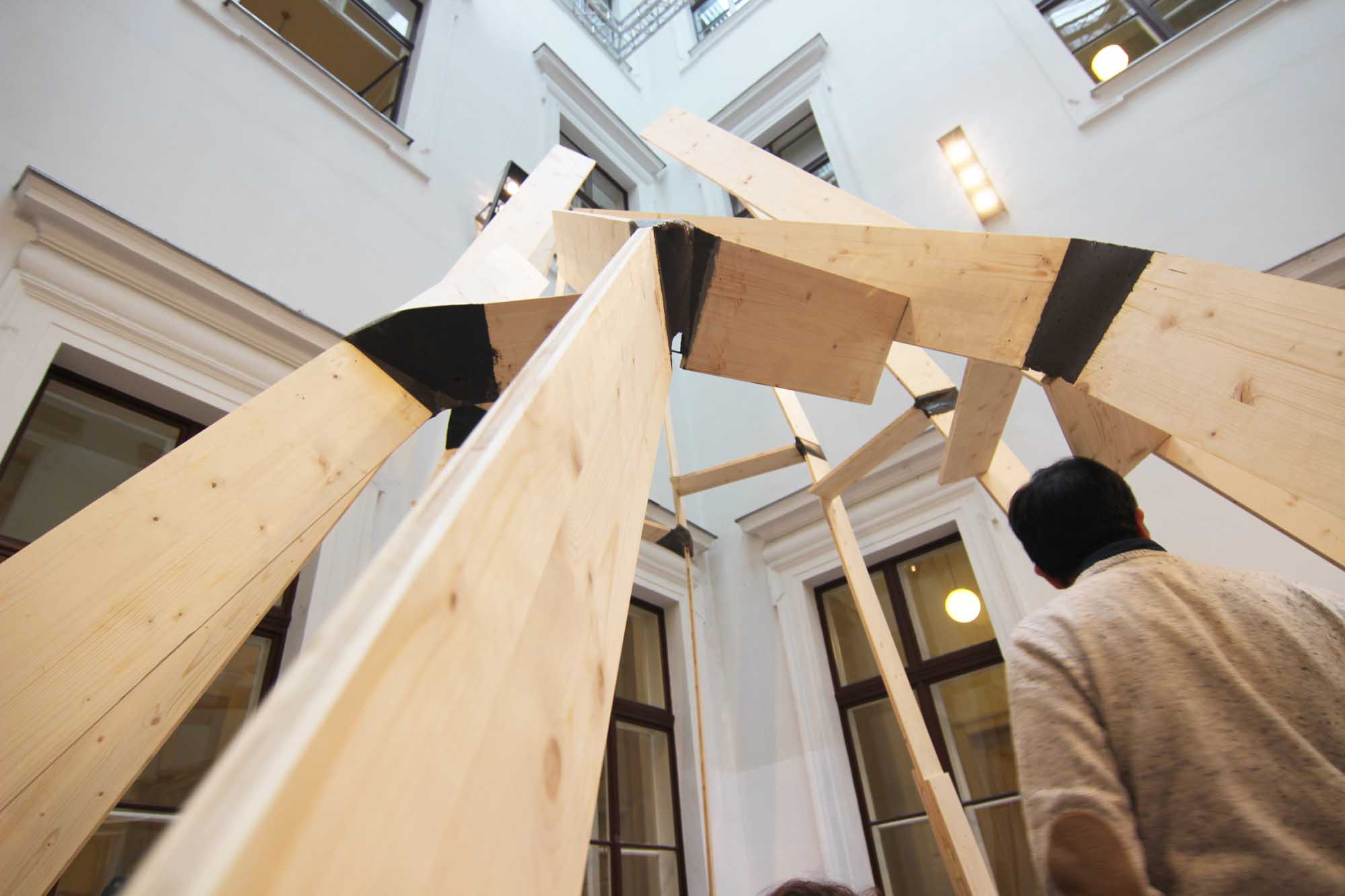Polymer Folding Scapes
The project represents a continuation of research that explores the potential of polymer concrete applications and wood/concrete composites in the production of full scale structures. It is a collaboration between the Institute of Architecture at the University of Applied Arts Vienna and the Hochschule Trier
The “ARCHITECTURE CHALLENGE” program is an international design workshop series in collaboration with international experts and institutions. It is intended for architecture students interested in exploring integrated digital design and fabrication while simultaneously designing a full-scale built project within the teaching environment of the Institute of Architecture at the University of Applied Arts in Vienna. Architectural Design at “Die Angewandte” is taught as an integrated, multidisciplinary process. Following this tradition, the design process in the workshop was enriched with robotic design strategies combining Grasshopper plugins such as the OCTOPUS and KARAMBA platforms. The workshop was taught by Andrei Gheorghe from Die Angewandte, Eirik Kjolsrud, Robert Thum and Wieland Becker from HS Trier, Robert Vierlinger from Bollinger + Grohmann Engineers and invited guest experts Peter Ortner and Lu Jiaxing. The handling of virtual simulation methods and the engineering of full-scale structures using digital manufacturing were a primary focus of the project. The polymer concrete material testing and application has been made possible through the support of the RAMPF Group in Germany.
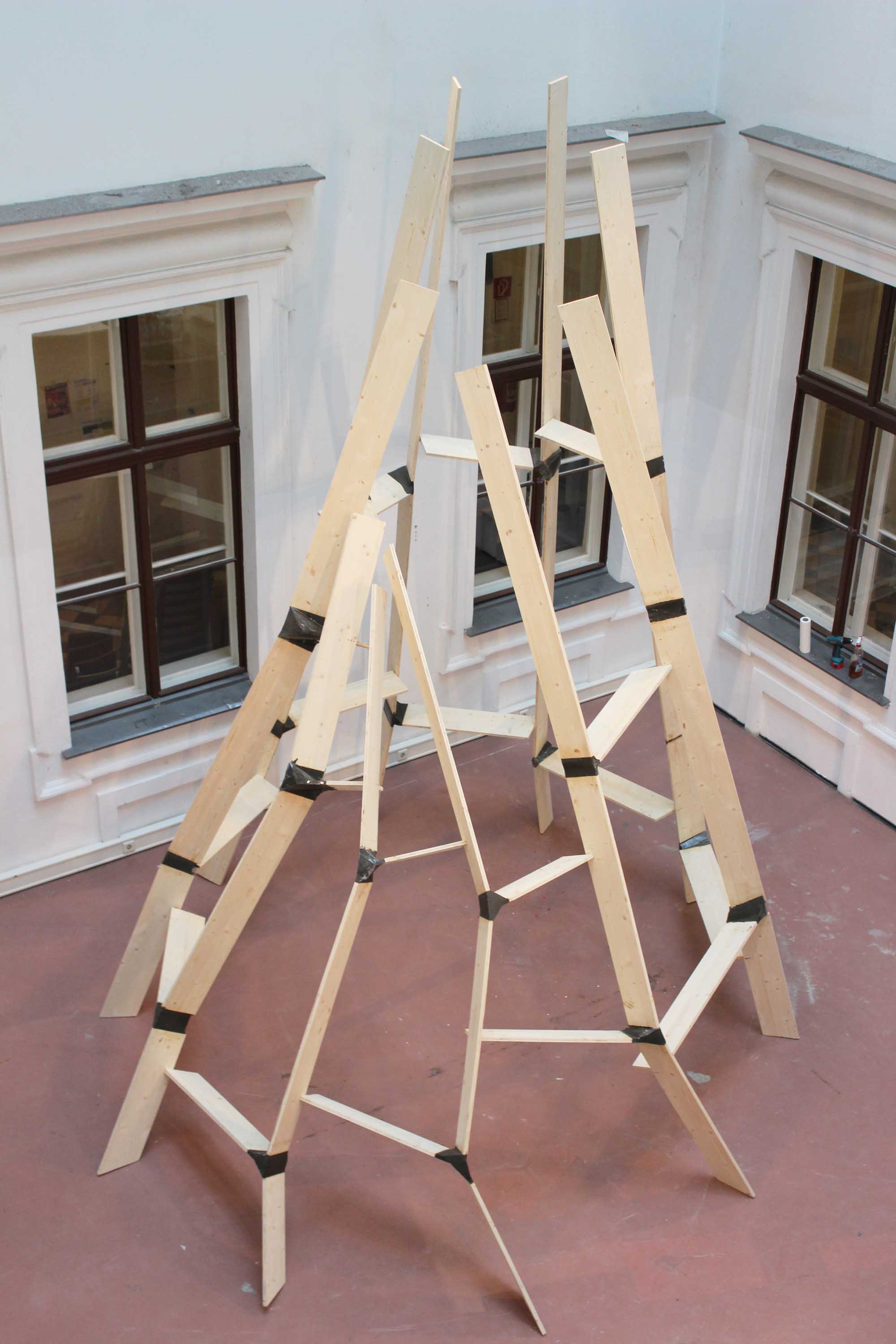
Structural Performance
Structural testing of joints in wood/polymer concrete composites revealed a strong tension and bending ability of the cured material. Using this method, stiff connection points between wood members could be achieved without the inlay of metal sheets. A hyperboloid surface was designed in Rhino Grasshopper and optimized using Karamba and multicriteria optimization in Octopus taking into account the architectural site context, structural behavior, assembly and construction limits.
Intrinsic Material Qualities
The precisely defined design strategy reacts with loosely defined material behavior. The formwork was unfolded from the 3D model and laser cut on polystyrol sheets. The wood members were fit at the joints in the formwork and the polymer concrete was cast. After the curing process, a stiff wooden joint consisting of direct adhesion of wood and concrete was achieved. The overall geometry emerged through the precise folding process of the cast nodes.
The precise, optimized overall geometry correlate with the very differentiated aesthetic quality of the cast polymer concrete joints. This intuitive material behavior enriches the digital precision resulting in artifacts of one – time unique aesthetic design results. Material experiment and final production of the structure merge in one single fabrication process.
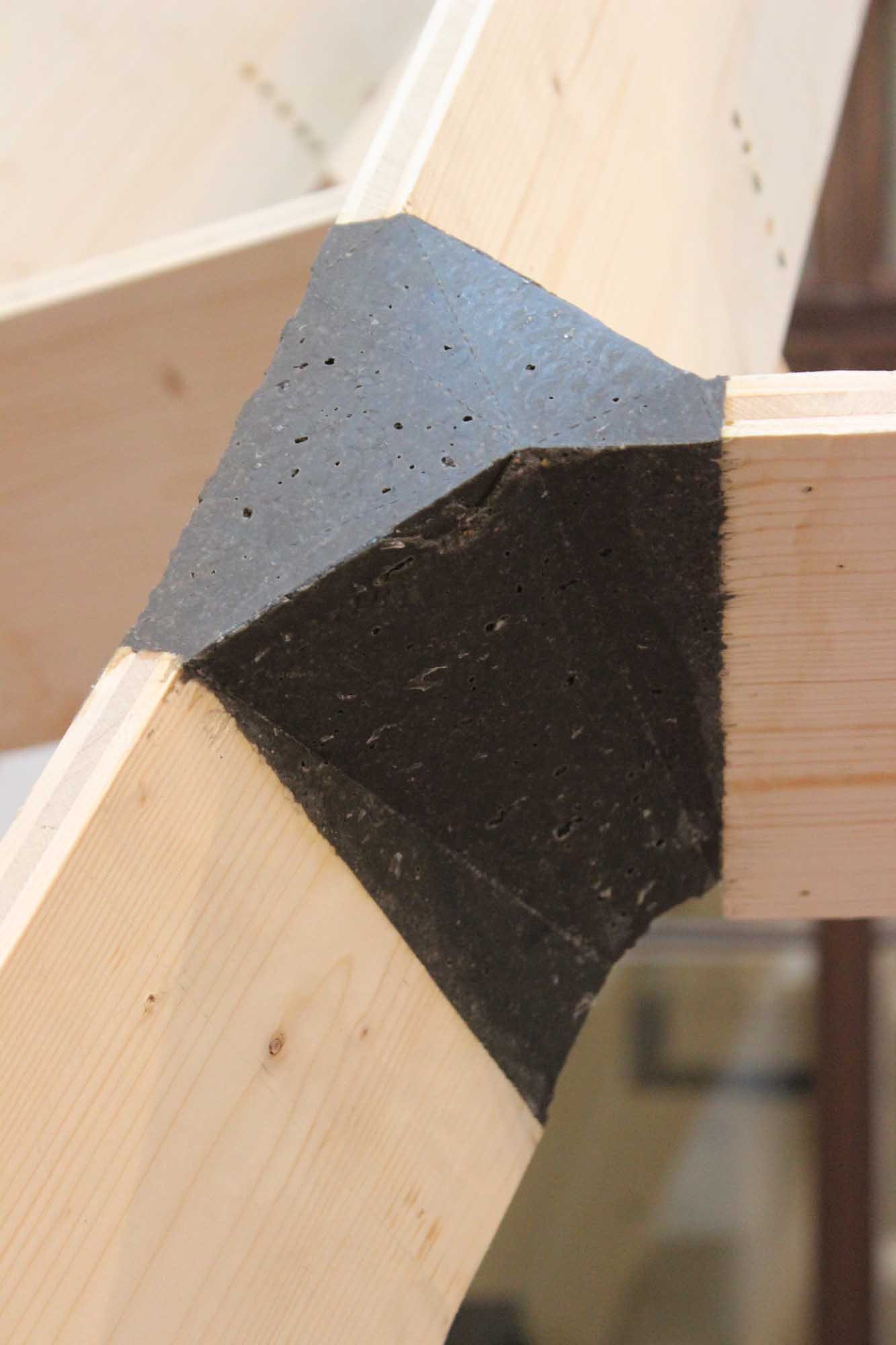
Fabrication Process
A Grasshopper definition was developed to extract two types of nodes, the cast 3-points polymer concrete nodes and wood – wood connection joints between the 3-points modules. Grasshopper was used to compute the wood – wood joints at a right angle to allow for easy assembly and fixation while erecting the final structure. A specific material mixture of the polymer concrete components combined with precise time management was required to produce the structural stiff nodes.
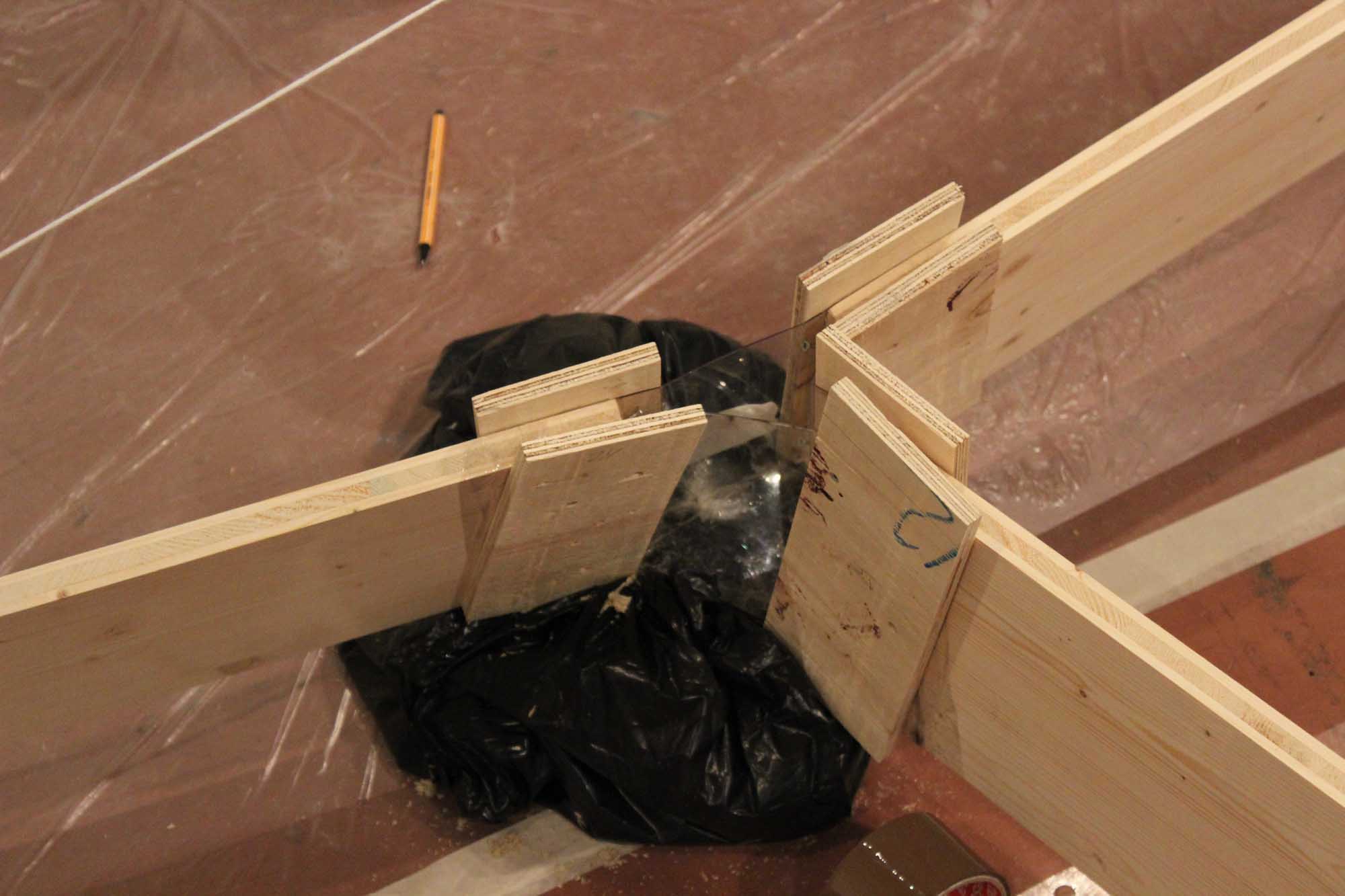
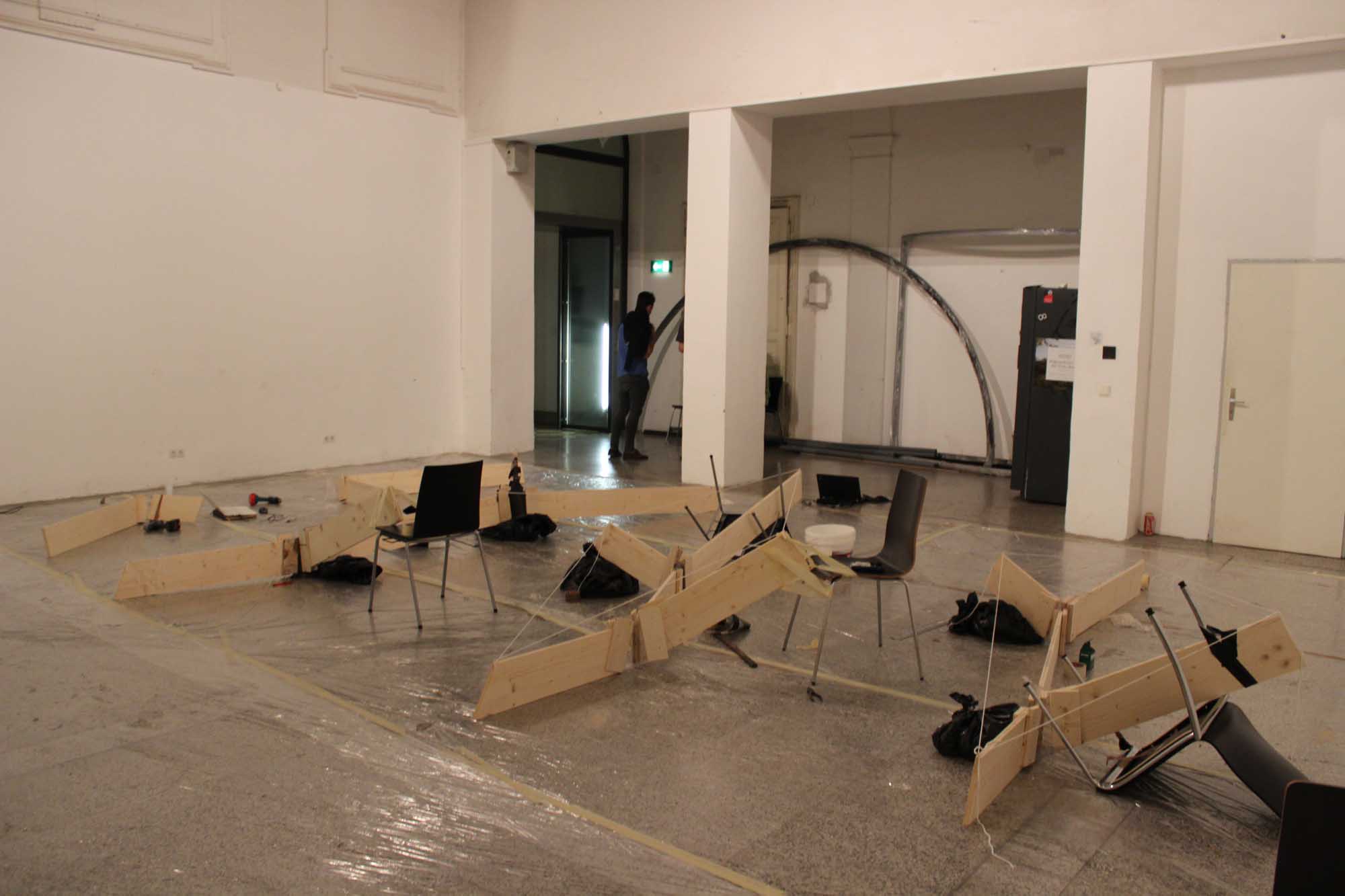
Future Application
Digital Design and Fabrication processes will have increasing importance in future architecture production. The project researches an alternative way of construction. The high strength polymer concrete is applied for the first time in a new way in this project to achieve structurally stiff wood/concrete composites without any metal inlays. The research project attempts to develop strategies of building full-scale architectural structures. In future, this technology can be refined to be used in fully functional small and large-scale construction.
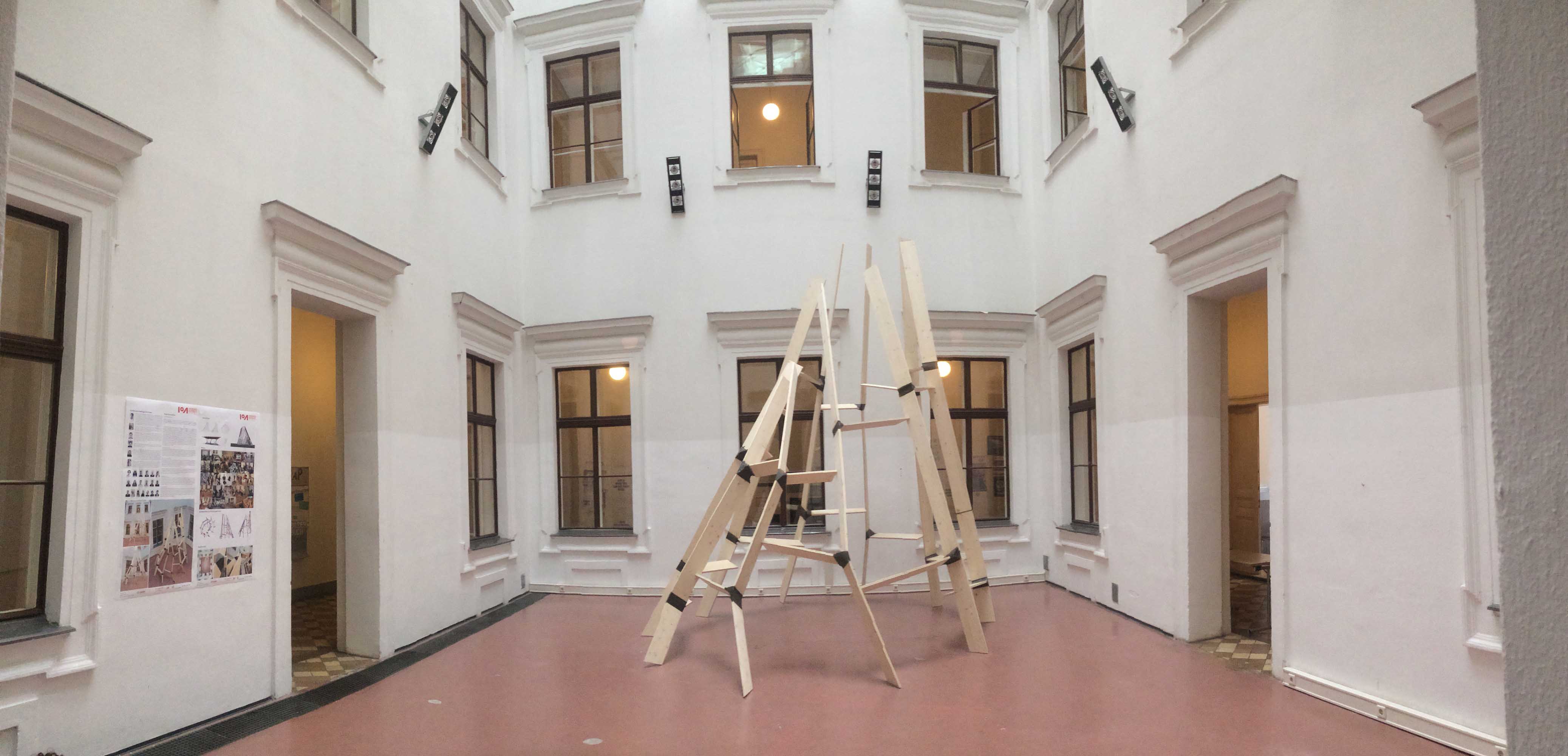

Instructors
Andrei Gheorghe, Robert Thum, Wieland Becker, Peter Ortner, Robert Vierlinger, Eirik Kjolsrud
Students
Ethan Kerber, Jiaxing Lu, Mehmet Onur Köklü, Julia Vishanenko, Clemens Neuber, Amine Khouni, Alexander Walzer, Marc Winklhofer, Jakub Havlík, Lukas Gschweitl, Juan Sepúlveda, Padure Andrei, Madalin Gheorghe, Anan Ashour, Tal Friedman, Marin Katusic, Sorana Chiris, Eleonore Audi, Lidia Ratoi, Vlad Popa, Klaus Marschallinger, Oliver Alunovic, Kevin Mazanek, Anna Varakli
